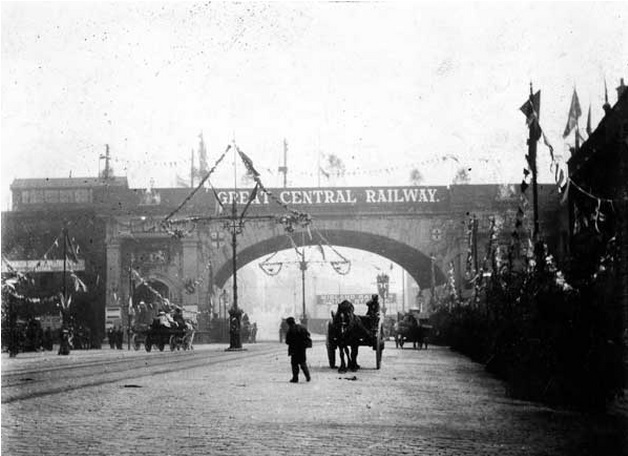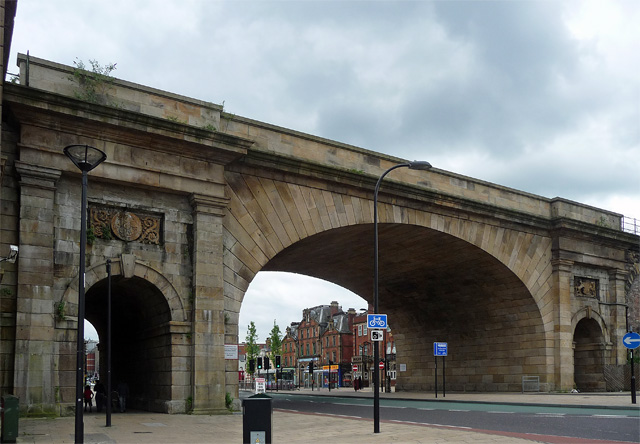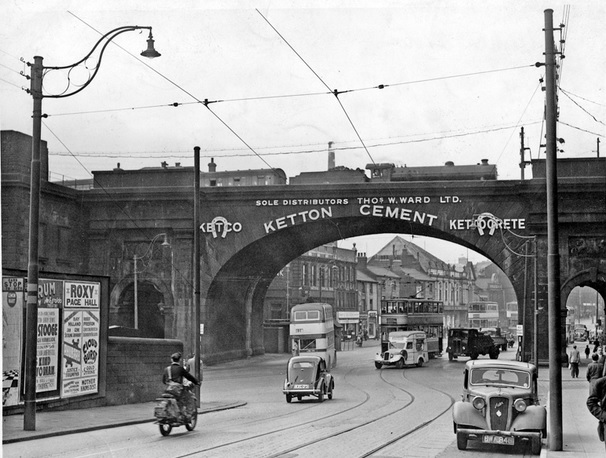
The Wicker Arch is one of Sheffield’s most famous landmarks, and yet, we take it for granted.
It is one of Sheffield’s greatest engineering projects and is a small section of a complex system of 41 arches completed in December 1848. The viaduct is 660 yards-long, and crosses the Don Valley, taking its name from The Wicker which the main arch passes over.
The Wicker Arches were built for the Manchester, Sheffield and Lincolnshire Railway Company, extending the railway from an old station at Clay Gardens (Bridgehouses), through the Nursery (Street), across The Wicker, over the River Don, the site of the old Blonk dam, the yard of the Sheaf Works, and the canal. The portion of the viaduct between The Wicker and Effingham Lane had increased width to accommodate the Victoria Station and was about 300 yards in length.
It was the brainchild of John Fowler, the Sheffield-born engineer-in-chief for the railway company, who later designed the Forth Bridge. The arches were made of brick, faced on each side with rows of stone quoins. The piers were massive and described at the time as being “built to withstand a bombardment rather than any pressure from above.”

John Fowler regarded the showpiece of the project as being the arch that crossed over The Wicker and employed Sheffield architects, Weightman and Hadfield, to add ceremony to the design, with construction carried out by Miller, Blackie and Shortridge
It was a wide elliptical arch, 30ft high and 72ft long, with voussoirs, flanked by single 12ft wide round-arched footways, edged by Tuscan pillars, with imposts, key-stones, and hood-moulds. Above each footway arch was a relief panel with a coat of arms. An attached building provided an entrance and staircase to the Victoria Station.
The Wicker Viaduct (as it was known until the 1850s, and later Victoria Station Viaduct) was not without its problems.
Several workmen died during construction, including three men who fell to their death when scaffolding collapsed underneath the right-hand Wicker Arch in 1848.
There were also several archway collapses, including one shortly before its completion, where one of the smaller arches collapsed with a “dull heavy thud.” It was a hazard of Victorian engineering, but nothing like the dramatic collapse of 20 arches at the Rother Viaduct, six miles away, built at the same time.
The project also cost the Manchester, Sheffield, and Lincolnshire Railway more money than envisaged, and it had to scale back construction to cut losses.

On 12th December 1848, a ceremony was held at the completion of the “great arch,” the final piece of the Wicker Viaduct. It was said that the viaduct contained a greater amount of cubic masonry than any other and was considered the largest piece of masonry ever constructed in Britain.
The Wicker Arch was decorated in banners and those present included Dr Mariano Martin de Bartolomé and Thomas Blake, both directors of the railway company, Thomas Dunn Jeffcock and William Fowler, company land agents, and John Shortridge, the contractor.
As the keystone was lowered into place, Dr Bartolomé acted as chief mason, and gave a brief but animated speech where he stated that “the eastern part of the railway should be characterised for what they had done, rather than for what they had said.”
He complimented the engineer and contractor on the solid character and appearance of the work, and afterwards there were three mighty cheers and “one cheer more” for the success of the line.
Shortly afterwards an engine and two carriages passed over the viaduct for the first time and continued to the junction of the Midland Railway at Beighton.
It is worth mentioning the heraldic carvings on the Wicker Arch, at the time considered by some in the railway company as being unnecessarily expensive and extravagant.

Those on the side of town are the coats of arms of the Duke of Norfolk and of Sheffield. On the other side are the arms of the Earl of Yarborough, chairman of the Manchester, Sheffield and Lincolnshire railway, and the seal of the company which were grouped in the arms of Sheffield, Manchester, Ashton-under-Lyne, Retford, and Lincoln.
Most of the other arches were later brick infilled and have served as workshops ever since, most now hidden with adjacent buildings.
The main Wicker Arch survived a German bomb that fell during World War Two, and which repairs can still be seen. And who can forget the flood waters that lapped around its piers during the floods of 2007 after the River Don burst its banks causing devastation all around?
The area has changed considerably but the Wicker Arch still imposes itself as it did when first built. Some of the arches were dismantled during electrification, and now it is mainly goods rail traffic that crosses over it.
In 1990 a partnership between Sheffield Development Corporation, Sheffield City Council, British Rail, and supported by English Heritage and the Rail Heritage Trust, restored the arches to their former appearance, although there are concerns about its present condition and preservation.

© 2020 David Poole. All Rights Reserved.